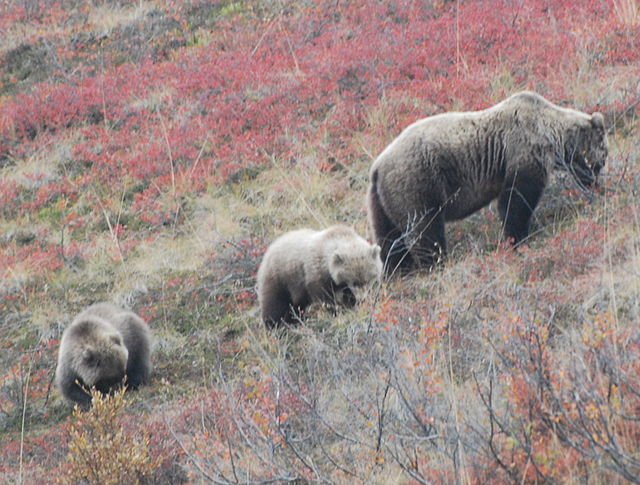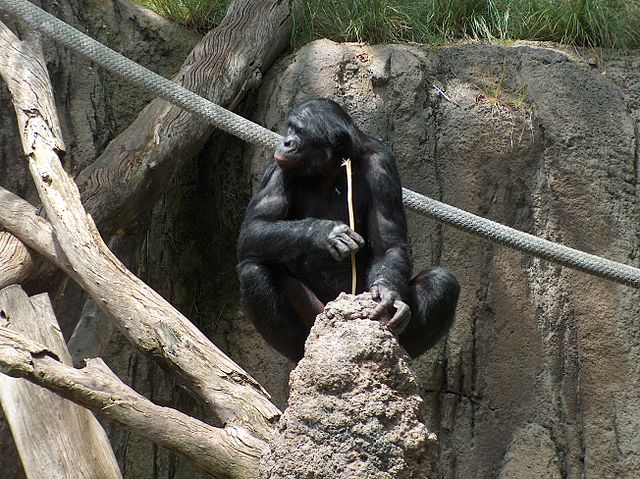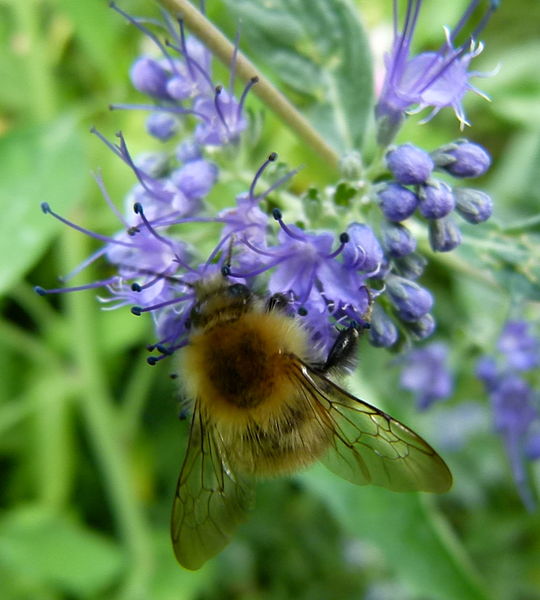Foraging is searching for wild food resources. It affects an animal's fitness because it plays an important role in an animal's ability to survive and reproduce. Foraging theory is a branch of behavioral ecology that studies the foraging behavior of animals in response to the environment where the animal lives.
Grizzly bear (Ursus arctos horribilis) mother and cubs foraging in Denali National Park, Alaska.
A troop of olive baboons (Papio anubis) foraging in Laikipia, Kenya. Young primates learn from elders in their group about proper foraging.
A European honey bee extracts nectar. According to Hunt (2007), two genes have been associated with the sugar concentration of the nectar honey bees collect.
A bonobo fishing for termites with a tool, a prepared stick
Optimal foraging theory (OFT) is a behavioral ecology model that helps predict how an animal behaves when searching for food. Although obtaining food provides the animal with energy, searching for and capturing the food require both energy and time. To maximize fitness, an animal adopts a foraging strategy that provides the most benefit (energy) for the lowest cost, maximizing the net energy gained. OFT helps predict the best strategy that an animal can use to achieve this goal.
Worker bees forage nectar not only for themselves, but for their whole hive community. Optimal foraging theory predicts that this bee will forage in a way that will maximize its hive's net yield of energy.
Figure 1. Energy gain per cost (E) for adopting foraging strategy x. Adapted from Parker & Smith.
Figure 2. Three types of functional response curves. Adapted from Staddon.
Figure 3. Marginal value theorem shown graphically.








